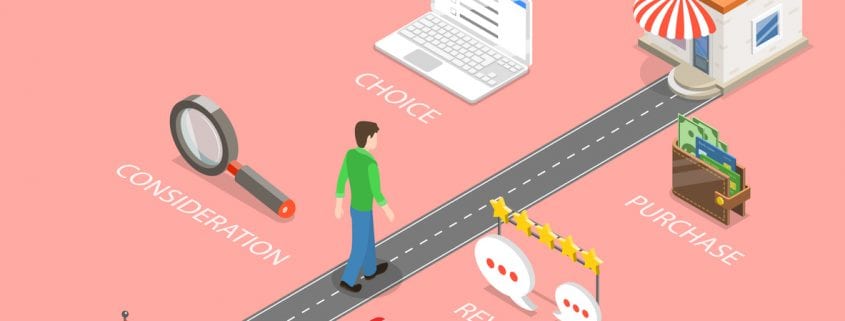
What is The Buyer’s Journey?
The general goal of every business is to attract consumers and turn them into customers. The process that a consumer goes through before they make a purchase is known as the buyer’s journey. The buyer’s journey has become a lot more complex over the years, especially since the advent of Internet. This is because consumers no longer rely on businesses to hold their hands and to guide them through their buyer’s journey. As a result of digital media, consumers can now navigate much of their buyer’s journey on their own. This also means that everyone’s buyer’s journey is different.
As a business, you will need to meet the needs of the consumer as they move through their buyer’s journey. You’ll need to be able to do this at every stage of their journey in a passive manner until they are ready to be engaged. This may seem like a challenge, but it’s what the entire concept of inbound marketing is built around.
We will be going over the different stages of the buyer’s journey, but before we do, it’s important to understand exactly what the buyer’s journey is and why it’s so important.

What is the Buyer’s Journey?
The buyer’s journey is the process a consumer goes through to research a product and to come to a decision to make a purchase. The buyer’s journey typically begins when a consumer realizes that they have a problem but don’t know what the solution to that problem is. For example, maybe they’ve stained their white carpeting with wine. They don’t know what the best solution is for getting wine stains out of their carpeting, so they will begin doing research online.
This research usually begins with a simple search on Google or other search engines. They will read up on possible solutions through articles and blog posts or view videos on the subject. Through this research, they will learn what products can help solve their problem. They will read up on the different products offered by different brands. The buyer will look into those brands to determine how reputable they are based on a variety of factors. They may contact that brand directly, download a free offer, or sign up to an email list through the course of their research.
At this point, you would begin building a relationship with them by nurturing them through the sales funnel. At the end of the sales funnel, once they’ve reached the end of the buyer’s journey, they will make their decision and choose a product to buy. This process is split into three main stages:
- Awareness stage – During this stage, the buyer realizes that they have a problem. They will begin doing research to figure out exactly what their problem is and what the cause of their problem is.
- Consideration stage – At this point, the buyer has defined their problem and its cause and are doing research into the possible solutions to their problem.
- Decision stage – The buyer now knows what the solution to their problem is and are comparing products or services as well as different companies to identify the best solution.
The Importance of the Buyer’s Journey
The buyer’s journey may seem long, but the fact is, you’re meeting them halfway through it. The idea of inbound marketing is that you make available a wealth of valuable information (through different forms of content) allowing the consumer to do the majority of their initial research on their own.
However, this means that it’s extremely important that you understand every stage of the buyer’s journey. This is because you’ll want to make sure that you have content available that will be helpful and informative to the consumer no matter what stage of the buyer’s journey they’re in or what channel they’re on. You will also need to be able to identify the stage of the buyer’s journey a consumer happens to be in so that you know when to engage with them.
The buyer’s journey consists of numerous stages that make up the research and decision-making process of a consumer. It is the process that the entire strategy of inbound marketing revolves around, which is why it’s so important that you understand what it is and why it’s important.

The landscape of the Internet is ever changing and Nicole has the energy and aptitude to keep Stevens & Tate Marketing out in front of the pack. She leads an enthusiastic team in strategic planning, development, search engine marketing, online promotions and advertising for the web.





